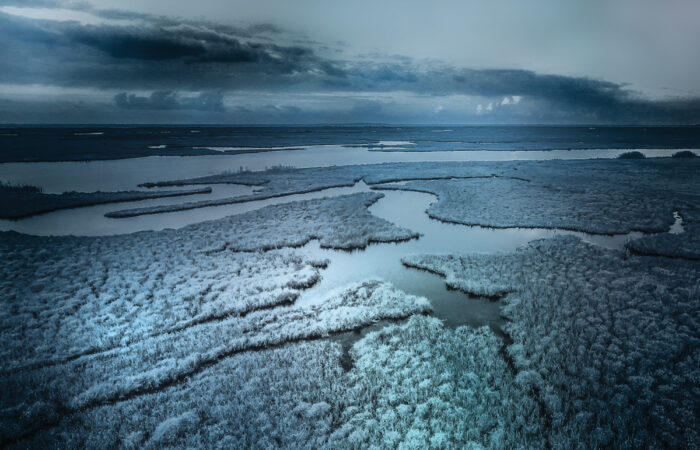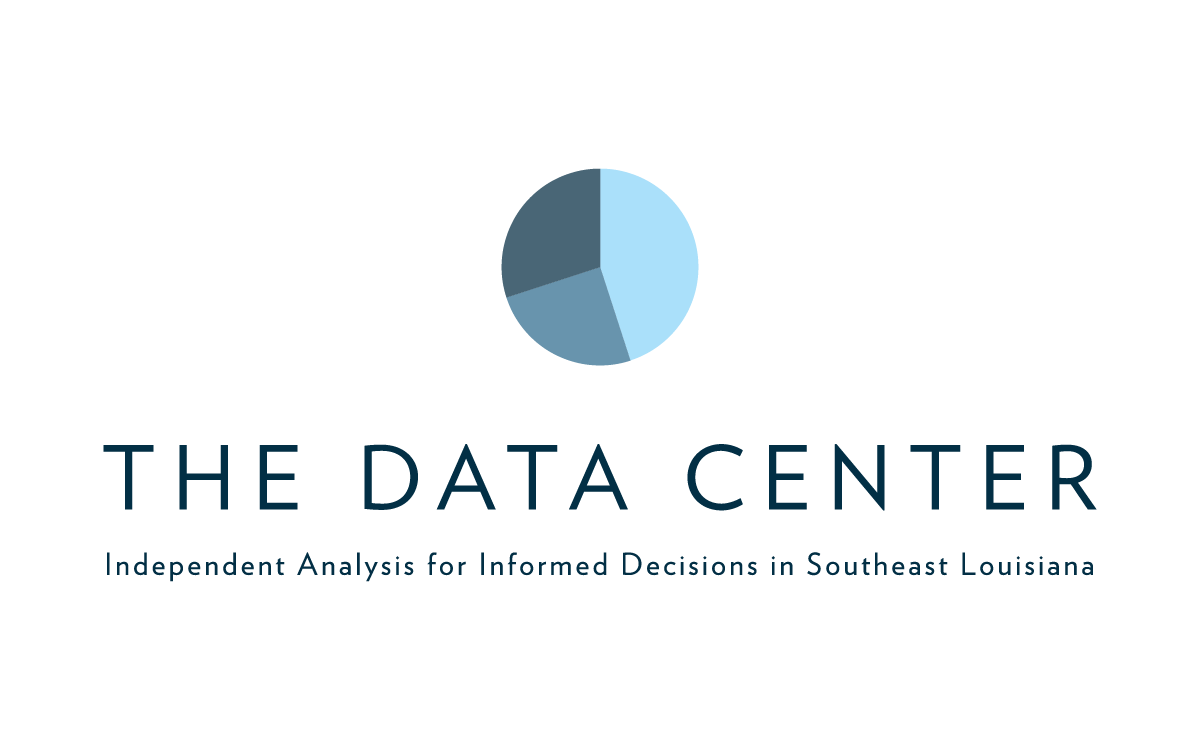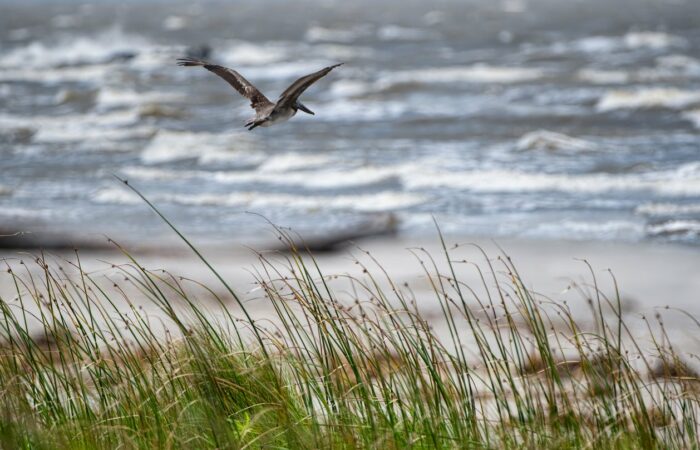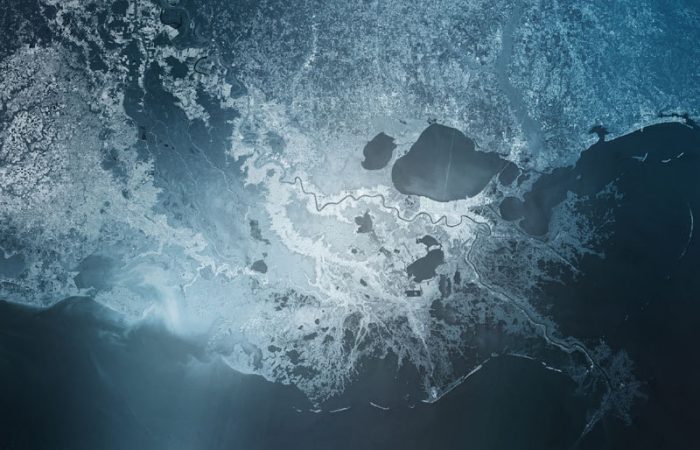
Toward an equitable blue-green economy: Pathways to a more inclusive sector
Published: Apr 05, 2022
At the federal level and in states and cities across the country, leaders are exploring how to connect job creation and equity goals with infrastructure improvement and climate change mitigation. These connections are especially relevant to Southeast Louisiana, where sea-level rise, loss of wetlands, increasing frequency of devastating tropical weather events like Hurricane Ida, and reduced reliance on emissions-intensive industry will shape the region’s future. Without targeted policy and planning, these stressors will disproportionately affect communities with the least financial resources and highest levels of vulnerability. At the same time, these challenges have the potential to reveal inclusive, sustainable pathways to economic growth. Carving out a more resilient future for Southeast Louisiana means confronting long-standing regional challenges around racial equity, environmental justice, and economic diversification.
Based on interviews with 30 people who work locally on these issues, the report Toward an equitable blue-green economy in Southeast Louisiana examines the alignment of economic development, environmental adaptation, and equitable inclusion in Southeast Louisiana. It focuses on critical opportunities where environmental investments are being made: Mitigating flood risks and upgrading water infrastructure; protecting and restoring the coast; and reducing greenhouse gas emissions. Together, this “blue-green” economy offers the region a pathway to a more economically diverse and equitable future.
This brief highlights barriers to an equitable blue-green economy, as well as insights on how to overcome them from people who work locally on water and green projects. A companion brief focuses more directly on specific skills and characteristics of occupations in the blue-green economy. For more detailed analysis, as well as a description of data sources and methods, see the full report.
A transformative blue-green economy?
Substantial investment in the blue-green economy is expected as governments at all levels and private industries move to lower greenhouse gas emissions, reduce vulnerabilities to climate change and coastal hazards, and improve infrastructure. Compared with the economy overall, jobs in water management, renewable energy, and other blue-green industries tend to offer good wages and are accessible to workers with a range of skill backgrounds (see the companion brief on skills in the blue-green economy).
“Water jobs” and “green jobs” can be defined as follows:
- Coastal and water management (“blue” or “water”) industries focus broadly on water infrastructure and flood mitigation, including a range of investments related to coastal protection and restoration. Among the varied jobs involved with large water management projects, some of the largest in terms of employment are engineers who design infrastructure projects and building trades occupations that implement their construction.
- “Green jobs” focus on restoring or enhancing environmental quality, such as reducing pollution and greenhouse gas emissions, building capacity for renewable energy, and conserving healthy ecosystems. These might include jobs such as solar panel installers, recycling workers and coordinators, environmental engineers, and landscape architects. Some green jobs may be generated indirectly as efforts to reduce greenhouse gas emissions, shift to renewable energy, and create sustainable infrastructure reverberate throughout the economy. These might include construction and building inspectors, commercial and industrial designers, and transportation managers.
Even if the blue-green economy delivers on fair wages, its promise falls short without addressing racial and gender inequity.1,2 Ensuring that everyone can contribute their skills and knowledge to climate mitigation and adaptation work—through formal employment and/or democratic participation in transition planning—is key to building a stronger and more inclusive region. In addition, the effective design, construction, and maintenance of critical projects—and their long-term performance in protecting the region and mitigating climate change—requires broad participation and access to key decisionmaking processes, especially by groups that have historically been underserved or marginalized during previous phases of regional change.3 Beyond realizing better returns from the blue-green economy’s growth potential, greater diversity and inclusion is a practical necessity for ensuring the region’s ability to mitigate and adapt to climate change and flooding.
Equity is an upfront concern for the stakeholders we interviewed.4 Two-thirds of them addressed how equity is related to their work on water before being prompted to do so.5 When prompted to describe the visions for Southeast Louisiana’s future that motivated their work, many pointed to a more equitable future for the region—often described in terms of flood risk, access to emerging sectors like water and green jobs, wellbeing and quality of life, and investment and infrastructure. This was the second most common response, only after an economic transition away from extractive industries to renewable energy, coastal restoration, and other blue-green industries.
Yet, to pursue this equitable and inclusive vision for the blue-green economy, several differences in perspective may need to be negotiated. For example, our interviews with water stakeholders revealed differing perspectives on scope (e.g., urban water management vs. coastal protection and restoration) and priorities (e.g., addressing environmental challenges vs. pursuing social outcomes). Broadly, a more equitable, more integrated blue-green economy can be pursued at two levels:
- More representative inclusion of local workers and businesses within industries that directly design, implement, and support projects related to climate, water management, and coastal protection and restoration.
- Tighter alignment of specialized water and green industries with the broader work of supporting communities through periods of change and addressing systemic inequities.
Barriers to making the blue-green economy more inclusive
The interviews shed light on three processes that perpetuate inequity within blue-green industries. First, “business as usual” practices around partnering, contracting, and hiring can reproduce exclusion. In assembling bids on projects, subcontracting agreements are shaped by narrow social networks. Even when unintentional, these routine business decisions can reproduce existing barriers.
Both interviewees below described regional contracting and partnering practices in water and green industries, and how those practices can intersect with systemic racism to exclude workers and businesses of color.
“The constraints that we come up against are the usual constraints. People don’t see people of color in this space. And most people that are doing this thing, they have their handpicked people to do it. They aren’t open to bringing somebody else in, of color or not. And I think that we have to be open-minded to partnerships…It seems like it’s competition, but really there’s enough water issues in our city that we wouldn’t have nearly enough folks to deal with them.” (nonprofit)
“Definitely in this industry, it’s hard to find talent. But in this region, I find that sometimes people find it a burden when they even hear ‘diversity and inclusion.’ When there’s an excuse to say, ‘oh, yeah, we’re trying to do that, but we’re just unsuccessful’…As soon as someone we don’t know or someone that’s a little different makes one mistake…it’s, ‘see? that’s why they’re not talented,’ because they did this or that and it wasn’t the way that we want it done. Once again, it’s that excuse we can use to say that talent isn’t there.” (private)
Second, existing occupational segregation in water and green jobs can be self-reinforcing. Groups with narrower points of entry to these types of work have less access to on-the-job training and experience to build the enhanced skills valued for water and green jobs, further constricting who can find stable careers and take on entrepreneurship in the blue-green economy.
The figure below depicts the workforce demographics of green and water occupations in Southeast Louisiana, with the demographics of all occupations included for comparison. The farther a colored dot is from the tick mark indicating “All occupations” the more that specific occupational category reflects gender or racial segregation. Currently, Southeast Louisiana’s blue-green industries are somewhat diverse. For example, Hispanic workers comprise a near equitable share in green industries and production and implementation water industries. Women are just under 50 percent of workers in water planning, design, and services industries, and Asian workers are also represented in these industries. Yet, the blue-green economy as a whole remains disproportionately White and male.6 Black workers are underrepresented broadly, and women are underrepresented in production and implementation water jobs and green jobs.

Source: The Data Center analysis of EMSI data.
Third, systematic bias can emerge against types of relevant expertise, especially knowledge that is less formal or harder to quantify. Even with the right experience and credentials for blue-green jobs, people of color, women, and people who do not have prestigious degrees sometimes encounter challenges to their expertise in professional settings. The participant below spoke to the sector’s undervaluing of community knowledge, the knowledge of workers of color, and of workers with a high school education.
“We have such a merit-based approach to dealing with folks that, somebody that had graduated from high school, a person with a degree or a doctorate is not going to treat them with the same intellectual respect. We see this all the time…It’s racism as well […] And I don’t think that we think community members are smart enough. And that’s a real shame.” (private)
Promising practices
Interviewees provided multiple examples of how hiring and other industry practices can increase equity and inclusion in these emerging industries. They also identified current well-intentioned practices that serve to reinforce inequities. The tables below are not meant to be exhaustive lists or to prescribe best practices, but they highlight a range of practices and reflections on systemic inequities that are on the minds of interview participants.
| Examples from interviews of equitable practices within blue-green industries from interviews |
|---|
| Share information about blue-green hiring and training openings with organizations led by people of color. |
| Push back against “how things are done” in engineering and design fields, to ask why certain practices exist, or why something new is not possible to do. |
| Support local professional organizations for historically underrepresented groups in blue-green industries, which can provide spaces to talk about grants and projects in the pipeline, sexism and racism in the industry, opportunities to collaborate, and create a sense of not being alone. |
| Implement paid on-the-job training programs that incorporate green skills, business skills, and soft skills. |
| Hold colleagues accountable for taking equity seriously and devoting more time and resources to it. |
| Build mentor-protégé relationships into contracts and create local chains of relationships. |
| Shape firm cultures to promote a sense of ownership over work for all, learning from mistakes, respect, and accountability to the community. |
| Employ maintenance workers for water and green infrastructure and include maintenance in project planning, which can lead to accessible job opportunities and ensure that new infrastructure remains in safe and working order across communities, especially communities that have experienced inequities and harms with public infrastructure. |
| Examples from interviews of good intentions reinforcing inequities in blue-green industries |
|---|
| The disadvantaged business enterprise (DBE) or small business designation can be broad, including a large pool of firms and capping at a high revenue. Many firm leaders suggested investigation into how DBE certifications and requirements can be retooled to promote its objectives more effectively. |
| When funding comes through an agency that does not move payments quickly, the need to shoulder the upfront costs can disproportionately harm small local firms and DBEs, even when they gain access to procurement opportunities. |
| In water and coastal spaces, White male scientists, often those with degrees in traditionally respected fields and carrying out leading research and practices, are more likely than affected groups to garner legitimate attention when discussing equity and inclusion issues. |
Half of the interviewees defined equity and inclusion, at least in part, as diversifying the types of work and expertise valued in water management beyond the design and construction industries, and/or stated a more inclusive definition of the sector as a future direction they would like to see. For example, an environmental scientist working in coastal management proposed that the evolution of coastal restoration will be in forging connections with other parts of the economy and maximizing project value for residents and businesses outside of design and implementation.
“Recognizing that this is a significant investment already on the table with hopes and plans for an even more significant investment for our economy is certainly something we need to continue to do. I think we could build on that by more purposefully linking the other sectors of the coastal economy to restoration efforts. We’re building $100 million plus projects with big heavy equipment that certainly support jobs for the people who operate that equipment and the people who designed the projects. But it also provides benefits to commercial fishers, recreational fishers, charter boats, birdwatchers, and tour guides. Now we know the projects are coming. We know the funding is there. We can pivot a little to being more critical about the nuance of the project value outside the construction economy.”
Another participant who works on infrastructure design and engagement around water and climate expands the scope even further to include the broader set of civic actions that comprise equitable blue-green transition.
“Civic engagement and the civic processes that I think would be necessary are the ones that we’re least likely to invest in because they don’t return economic benefits. To invest in people’s capacity to engage science and planning and economics, and to invest in democratic processes for hashing out our hardest problems. Those are exactly the things we need to do to address racial inequality. Those are exactly what we need to do to address climate change.”
The tables below summarize other suggestions, and raise possible concerns, related to making the types of work pursued through the blue-green economy more inclusive.
| Examples from interviews of ways to make the blue-green economy more inclusive |
|---|
| Bring groups of community-based organizations and organizations working for equitable outcomes into coalition for water and climate planning processes |
| Workforce at core institutions spend more time and resources on community engagement |
| Treat community engagement as a paid blue-green economy job, included in grants and RFPs |
| Hire water and green workers representative of and based in communities where projects are located |
| Consider work to address systemic racism, economic inequities, historical processes surrounding land and development, and exclusion from democratic processes part of blue-green industries |
| Build water and climate literacy among residents and help experts use language and concepts that stem from community knowledge and make sense to residents |
| Include ancillary services around blue-green infrastructure projects in the initiatives for local and equitable contracting |
| Examples from interviews of how inclusion can unintentionally work against equitable outcomes in the blue-green economy |
|---|
| Blue-green infrastructure projects can exacerbate existing tensions between residents and state agencies or institutions, or among residents |
| Perception that climate change work already faces challenges and that bringing systemic racism into that messaging might jeopardize water and green initiatives |
| Required community engagement or diversity and inclusion with grants can tokenize individuals and groups in some circumstances |
| Funding for planning and community aspects of water and green projects can go to better connected organizations and individuals, over local residents and communities of color |
| Bringing equity advocates together with core agencies and firms could weaken equity and community goals, practices, and outcomes. |
Conclusion
A thriving blue-green economy has the potential to promote equitable outcomes for the region by generating good jobs while responding to the region’s environmental challenges. Investments in coastal protection and restoration, water management, and green infrastructure make space for collective knowledge and problem-solving around pursuing equitable outcomes. But the pathways for water infrastructure and green jobs to become an inclusive engine for regional economic growth are not yet fully drawn across Louisiana, in national policy, and globally.7 In addition to figuring out how best to build up homegrown green and water infrastructure businesses, interviewees from across nonprofit, private, and public sectors see the potential for local projects to generate generalizable lessons on integrating equity into water and green work:
We have these scientists, these big architects who are coming here…But the opportunity where we can lead is, how do we make sure that [water and green investments] are sustainable and equitable?…So that it lasts and actually transforms how we live our lives, improves our lives here on the ground, through the jobs for our residents, especially low-income and communities of color. I think that’s important for any city globally… that’s what we can show here… Because if the same people benefit, we didn’t win.
How do we expect people to respect [trees and water] when they haven’t been respected? It’s all tied together. The part [of green industry] I think we could do and teach other cities is how to use it for serious workforce development and wealth building for people who are poor.
The way that we’re anticipating risk over a longer time horizon, how we take that information and apply it to a planning process that engages the public, a multi-disciplinary effort to really thinking through a societal evolution as a result of what we know about risk. I think that is transferable…There’s a perception that there’s less money in that type of niche expertise. There’s just not a lot of focus placed on it.
Our findings point to two general pathways to more equitable outcomes. The first is greater diversity and inclusion within water and green industries. Design and construction firms, major infrastructure projects, and environmental agencies can drive opportunities to local workers and businesses, especially since more inclusive participation enriches the region’s communities of color and frontline communities that face the greatest risks and uncertainties. Better representation of the regional workforce and population across the spectrum of water and green occupations will also translate to more effective project planning and implementation. These goals can be furthered with targeted interventions in the workforce pipeline that go beyond skills training. Interventions should encourage changes to business-as-usual hiring and contracting practices, increase access to core water and green occupations, and equitably value the water and green knowledge of all residents.
The second pathway is to dissolve barriers between blue-green industries and the broader work of addressing systemic inequities and supporting communities through periods of change. Nonprofit and community-based organizations have important roles to play. They can drive community concerns into key decisions about mitigation, adaptation, and infrastructure. Tighter integration of equity goals need not come at the expense of progress on the scientific and technological aspects of water management. Each will make the other stronger. An equitable transition demands the same rigor as the science of coastal change and the implementation of major infrastructure investments.
Footnotes and Sources
1 Zakiya, Afia S. “Water Careers and Opportunities for African Americans.” Congressional Black Caucus Foundation. (2019). www.cbcfinc.org/publication/water-careers-and-opportunities-for-african-americans/
2 Mark Muro, Joseph W. Kane, and Adie Tomer. “Inclusion must be front and center in President Biden’s focus on clean energy jobs.” Brookings (February 9, 2021) www.brookings.edu/blog/the-avenue/2021/02/09/inclusion-must-be-front-and-center-in-president-bidens-focus-on-clean-energy-jobs/
3 Carol Zabin. Pulling California on the High Road: A Jobs and Climate Action Plan for 2030. UC Berkeley Labor Center (2020). laborcenter.berkeley.edu/putting-california-on-the-high-road-a-jobs-and-climate-action-plan-for-2030/
4 To be sure, this interview data can only address how leaders in water management and coastal restoration are thinking about equity. Additional research is needed to understand whether the work they and others carry out and the industries they work in are effectively moving toward equitable practices and outcomes.
5 Nearly every participant of color drew a connection between equity and water management during the interview before being prompted on the topic, compared with about half of white interviewees. All interviewees working only in urban contexts did so, as well. While these patterns are not necessarily representative, they did emerge in the data. Otherwise, the centrality of equity did not vary substantially by any other characteristics of the interviewees, such as their sector of work.
6 A March 2021 report prepared for members of the House Committee of Science, Space & Technology illustrates that the federal STEM workforce nationwide is disproportionately White and male. Women are underrepresented especially as engineers and in the STEM workforce at environmental agencies including the U.S. Environmental Protection Agency (EPA) and the National Oceanic and Atmospheric Administration (NOAA). Black workers are not just underrepresented in STEM at these agencies, but their representation declined or remained stagnant over recent years. Source: science.house.gov/imo/media/doc/2021-3%20EMBARGOED%20Scientific%20Brain%20Drain%20Majority%20STAFF%20REPORT%20w%20cover%20page.pdf
7 Kohler, J. et al. “An agenda for sustainability transitions research: State of the art and future directions.” Environmental Innovation and Societal Transitions 31 (2019): 1-32.



